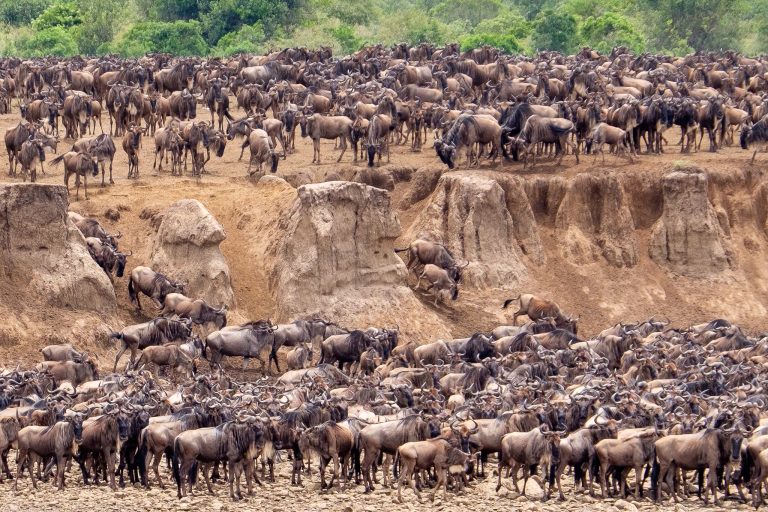The Great Wildebeest Migration: Distance Covered
The wildebeest migration is one of the most spectacular events in the natural world. Each year, over two million wildebeest along with hundreds of thousands of zebra and gazelle undertake a journey of more than 1,800 miles across the Serengeti National Park and the Masai Mara National Reserve. This incredible phenomenon is one of the longest and largest mass migrations of mammals on Earth.
What is the Wildebeest Migration?
The wildebeest migration is a seasonal event in which millions of wildebeest, zebra, and gazelle move between the Serengeti National Park in Tanzania and the Masai Mara National Reserve in Kenya. It is a spectacular event that takes place over the course of several months and involves a journey of more than 1,800 miles.
How Far Does the Migration Travel?
The wildebeest migration travels more than 1,800 miles each year. It begins in the Serengeti National Park in Tanzania and ends in the Masai Mara National Reserve in Kenya. Along the way, the herd crosses the Grumeti River, the Mara River, and the Talek River.
Challenges Faced by the Wildebeest
The wildebeest migration is a dangerous journey for the animals. They must cross crocodile-infested rivers, face predators such as lions and hyenas, and battle exhaustion and hunger. In addition, the herd is constantly on the move, making it difficult to find food and water.
Benefits of the Wildebeest Migration
The wildebeest migration is beneficial to both the animals and the environment. For the wildebeest, it is an opportunity to find new sources of food and water. For the environment, it helps to spread nutrients and seeds, which helps to promote new growth. It also helps to keep the ecosystem in balance, as the wildebeest help to control the population of certain species.
The wildebeest migration is an incredible event that takes place each year. This incredible journey covers more than 1,800 miles and is a testament to the strength and resilience of these animals. The migration is also beneficial to the environment, helping to spread nutrients and seeds and keep the ecosystem in balance.

